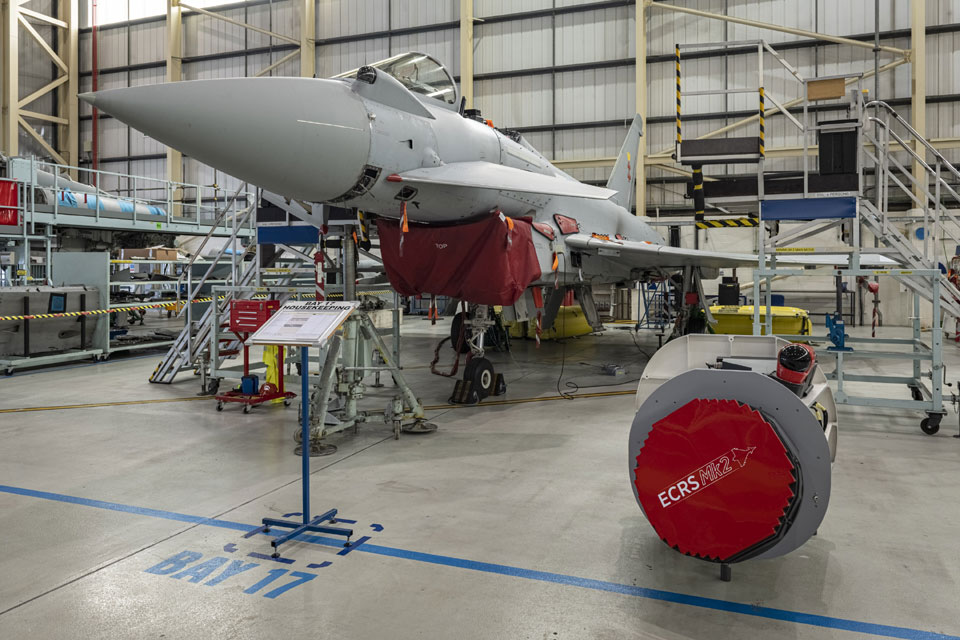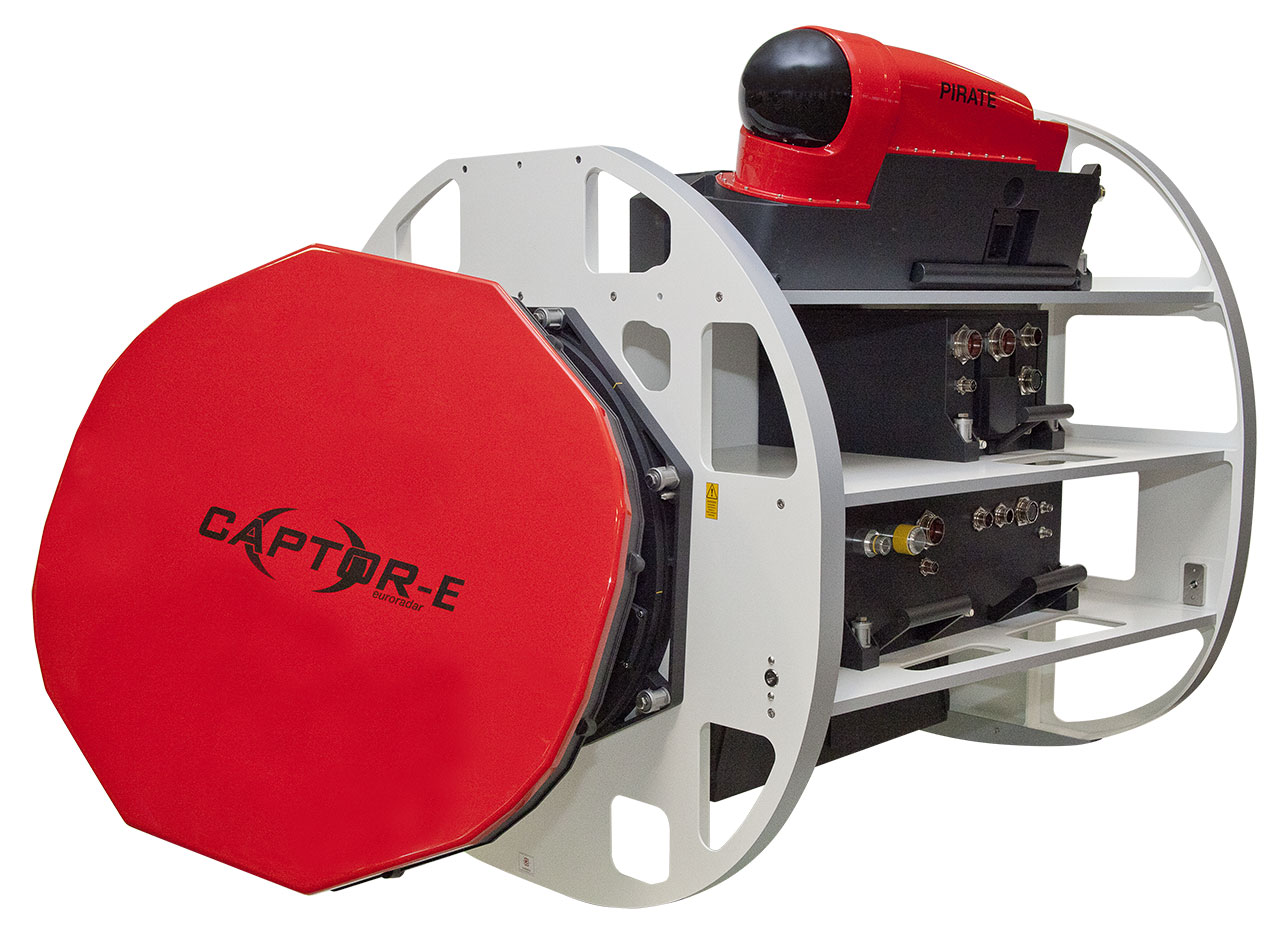Leonardo has a long and very successful history in the development of fire control radars for combat aircraft, dating back 70 years. The company has been at the forefront of radar design and development throughout this time, pioneering many radar technologies and engineering ‘firsts’ that have been operationally proven on fighter aircraft across the globe and contributed to many successful missions.
More recently, the company has expanded successfully into the AESA surveillance radar space and now delivers sensors for a variety of crewed and uncrewed ISR platforms.
While the basic concepts of radar remain the same as when the technology was invented – emitting radio waves and analysing the returned energy – the technology and the capabilities provided are vastly different today. Leonardo is a global leader in modern AESA radar technologies and continues investing in future designs and concepts that will be operational on advanced military aircraft for many years to come.
What is AESA?
Active Electronically Scanned Array (AESA) is now the pinnacle of radar technology and leverages many solid-state Transmit/Receive Modules (TRMs) at the array face. This allows for the independent control of phase and amplitude, which gives the ability to generate and control high-power, multiple agile radar beams, accurately around the airspace, and thus support several air-to-air (A2A) and air-to-ground (A2G) operating modes.
AESA – also known as E-scan – gives aircrew the ability to track multiple targets with very high accuracy and power, which is critical for modern air-to-air combat and ensuring that crews have full situational awareness in congested and contested environments. Older-generation mechanically scanned (M-scan) radars employ only one transmitter and receiver, and are thus constrained in both detection ranges and accuracy of tracks, owing to their single-scan capability.
AESA allows early track formation at initial detection range and very accurate tracking of manoeuvring targets. “To achieve this accuracy, you need to be able to transmit energy at the target much faster, and AESA allows you to do that at the microsecond level, rather than the second level that was possible with M-scan,” said Ross Wilson, VP of Engineering. “You’re also able to gain multiple looks at the targets to achieve improved track formation within a rapid timeframe and also gain much more information about the target from an electromagnetic signature perspective.”
AESA features
The introduction of AESA radars into military aircraft has meant that the capabilities of these platforms, particularly fighter aircraft, have expanded significantly. The multiple functions that AESA enables can provide a significant amount of flexibility for aircrew to perform several missions. Where combat aircraft used to have either dedicated A2A or A2G roles, this has now largely been replaced with the introduction of modern multi-role combat aircraft, with AESA radar at their heart.
Because of AESA’s ability to shape the radar beam, this has additional benefits including improved clutter mitigation. Clutter in radar refers to any return from the ground that can mask out potential targets, but with AESA technology there is flexibility to change the beam shape and waveforms to deal with clutter, which wasn’t possible with older radars. The ability to adapt waveforms and frequencies also has electronic protection capabilities, making it difficult for adversaries to jam or deceive the radar using electronic warfare (EW) techniques.
AESA radars also benefit from significantly reduced lifecycle costs and improved reliability compared to M-scan. With just one transmitter and receiver, M-scan radars have always had a single point of failure, but with the introduction of multiple TRMs, the architecture of AESA radars has allowed for what is known as ‘graceful degradation’, which means it continues to function even if several percentage of elements are inoperative.

Fighter jet radars
For a combat aircraft, the fundamentals of radar remain constant; crews need to be able to detect at longer ranges than adversaries, and the accuracy of the radar must also remain at high levels at these increasingly large distances. The use of Beyond Visual Range (BVR) air-to-air missiles and AESA has meant that aircraft can engage faster and over greater distances, and importantly outside an adversary’s radar detection envelope.
“It's a constant game of cat and mouse; who can see first, and who can shoot first,” explained Ben Geal, Radar Campaign Manager and ex-Typhoon Qualified Weapons Instructor (QWI). He added that by employing AESA radar, aircrews can be significantly more confident about what is in the airspace around them, and ensure that they have not missed a threat that might have been missed using older M-scan technology.
As well as long-distance detection, radars also remain critical to “close-in” operations, such as the need to use the aircraft’s gun system at close range or visual identification in high-risk environments where visibility is reduced, such as poor weather. Here an advantage of AESA is the ability to change the beam size, which optimises the sensor for the mission or scenario that the aircrew finds itself in.
AESA radars such as the Leonardo-led European Common Radar System (ECRS) also have A2G functions, including imaging and mapping capabilities, which allow for additional intelligence, surveillance and reconnaissance (ISR) functions. This has been supported through software-led development and increased processing power at the back end of the system, which has been essential as a result of the increased data that modern AESA radars ingest and produce.
Leonardo’s pedigree
Leonardo was an early pioneer in AESA radar technologies, investing significantly in research and development from the 1990s onwards. These investments have paid dividends and Leonardo is now a market leader in the airborne AESA radar space, developing some of the best AESA radars in the world for militaries globally.
In the fighter jet domain, Leonardo has pioneered work on the ECRS along with its industry partners, including the core Mk.0 variant (also known as CAPTOR-E). This radar is specifically for the Eurofighter Typhoon – a platform that Leonardo has a long heritage on – and has already been successfully delivered to two countries operating the aircraft. Leonardo’s Raven AESA fire control radar is also part of the advanced Saab Gripen E fighter, which is operated by Sweden and Brazil.

As part of current developments, Leonardo is leading the development of the ECRS Mk.2 variant, which will see service on the Royal Air Force’s Typhoon aircraft. The Mk.2 variant will feature all the benefits of an AESA radar that have been detailed above, but with enhancements in both the front and back end, making it arguably the most advanced fighter radar ever produced. As well as its traditional radar functions, the new Mk.2 will allow the Typhoon platform to perform EW functions, such as electronic protection and attack, and is capable of spiral updates on a reduced cadence.
The intent of future fighter enhancements is to gain ever more integration and fusion between its sensor suite, concurrently and at high speed to increase platform capability and deliver a more autonomous control and protection system. Multi-functional RF Systems (MRFS) are already under development via ECRS Mk.2, bringing together some of these aspects, and growth within this space will only increase.
The future of radar is bright with continual investment and advanced research in new radar technologies and techniques, along with expanding platform enhancements and programmes such as Global Combat Air Programme (GCAP) and beyond.
Conclusion
The requirement for military aircraft to have the capability to scan their environment, with the ultimate aim of tracking, identifying and potentially engaging other aircraft, has been in existence for over half a century, and remains operationally relevant to this day. The introduction of AESA has given air forces a competitive edge over adversaries, and the continued development of this technology remains critical to maintain this advantage.

